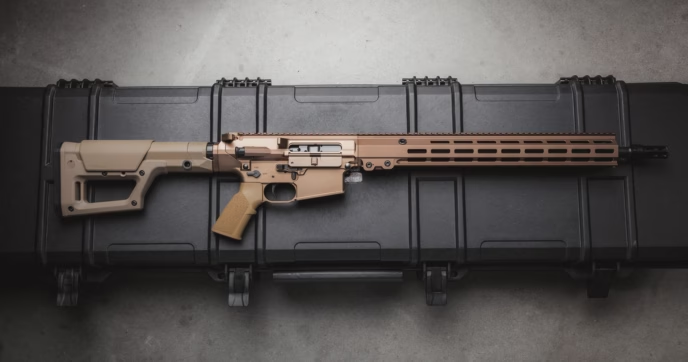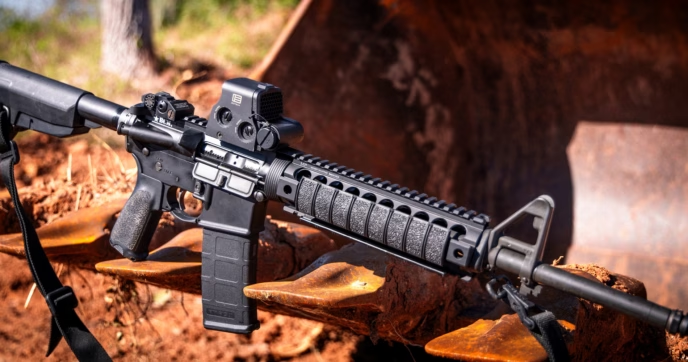Whenever you decide to build an AR-15, you’ll eventually come to a crossroads of sorts when planning it out—more specifically, you’ll need to think about how you intend to use your rifle, and few parts impact performance quite like your choice of barrel does.
AR-15 barrels are available in a multitude of configurations, with each one being optimized for different applications. While you might immediately think of the different barrel length options available for the platform, the barrel’s profile is another crucial consideration.
If you aren’t already familiar with the term, “barrel profile” refers to the barrel’s outside shape, thickness, and taper. Different profile barrels are better suited for different applications, and they can have a profound effect on your AR-15’s weight and accuracy.
Understanding Barrel Profile Fundamentals
Throughout its lifespan, the AR-15 has served as the basis for many rifle systems, with duty-grade general-purpose rifles like the M4, compact rifles like the MK18, and long-range powerhouses such as the MK12 SPR being among the most iconic.
While you may assume that the primary reason these rifles excel in their respective roles is solely due to their barrel lengths, it’s crucial to recognize that they also have specialized barrel profiles that optimize their performance.
Why Barrel Profile Matters
Your rifle’s barrel profile has a significant impact on the barrel’s overall weight, stiffness, and heat dissipation capabilities. Because of this, different barrels have different applications that they’re best suited for, and there are a lot of barrel profiles to choose from. But the question that usually comes to mind is: “which is best”?
Like the age-old question, “what’s the best AR-15 barrel length?”, the best barrel profile is the one that best meets your needs. So, ultimately, choosing one profile over another is a matter of determining your rifle’s purpose, as well as your own preferences. While there are several unique barrel profiles, the most common ones you can expect to find are Pencil, Government, SOCOM, and HBAR barrels.
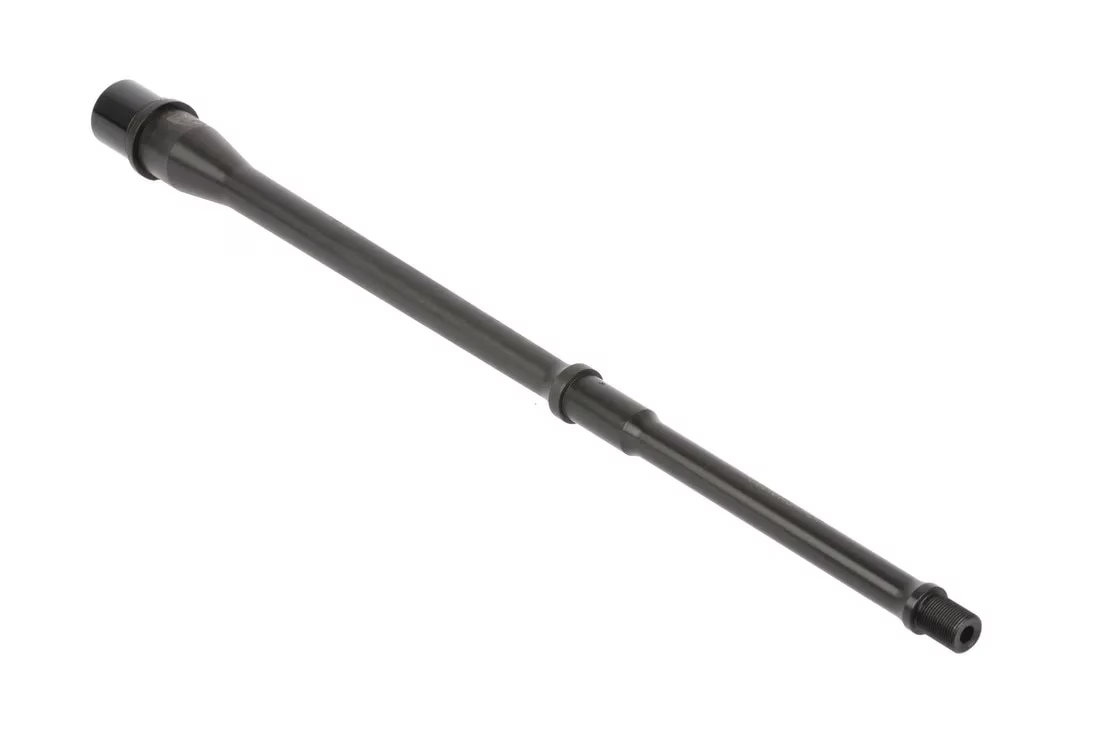
Pencil Barrel Profile
Pencil profile barrels have been around for quite some time, as they were some of the first barrels ever used on early AR-15 models. In fact, historical rifles like the M16A1 and CAR-15 primarily used them until their designs were later altered. Much like their name would suggest, pencil profile barrels are some of the thinnest ones available for the AR-15.
Pros of Pencil Barrels
One of the greatest advantages pencil barrels offers is their light weight. Being so light, they can shave a considerable amount of weight off your rifle, making them easier to carry over long periods of time. Plus, in the right configuration, they can be incredibly maneuverable and exceptionally accurate with the right ammo.
Cons of Pencil Barrels
Being thinner, pencil barrels are notorious for heating up quicker than other barrels. Depending on how fast you fire your rifle, this can lead to elastic deformation, which will worsen your barrel’s harmonics, and in turn, your accuracy. This isn’t to say that you’re all of sudden going to start throwing shots when firing, but if you don’t give your barrel time to cool down between magazines, you’ll begin to notice POI shift while firing.
Best Use Case
Overall, pencil barrels are best for enthusiasts who want to minimize the weight of their rifle. It’s common to find pencil profile barrels in an assortment of barrel lengths, and with the right setup, they can provide the accuracy needed for dedicated long-range and hunting builds, while also being versatile enough to be used in defensive and competitive applications.
Just remember, regardless of whether you build a long-range rifle or a smaller AR pistol or SBR, you’ll need to give your barrel time to cool down so that it doesn’t overheat.
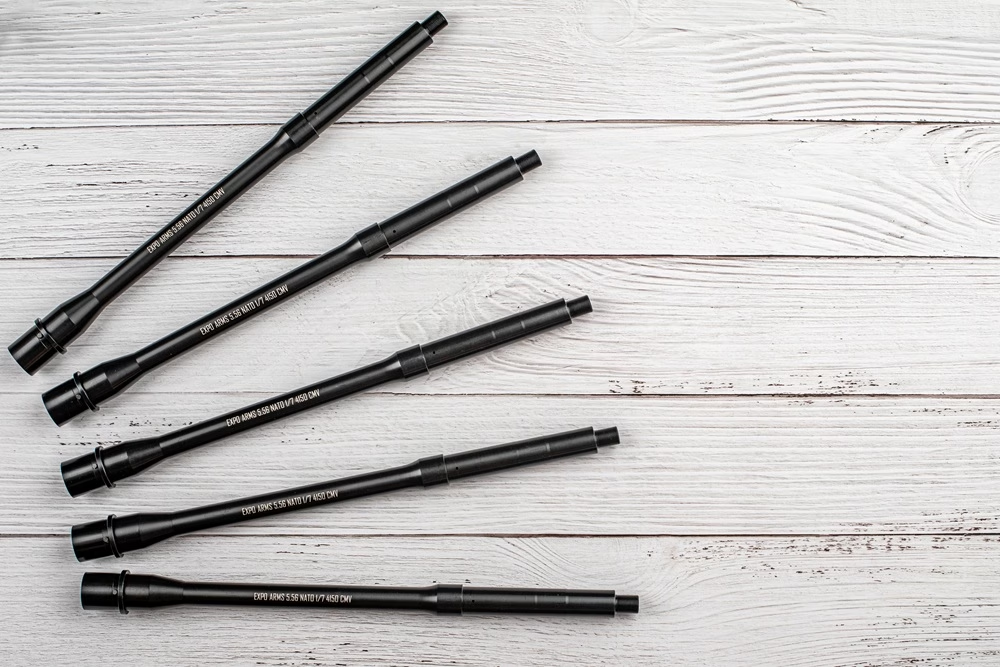
Government Barrel Profile
As highlighted above, pencil barrels were extensively used on M16A1, but throughout their military tenure, many rifles had warped barrels from combat stress and strenuous use from soldiers. To fix these issues, the government profile barrel was created and implemented on the M16A2, as well as other rifles at the time. Government barrels retain the .645-inch diameter of pencil barrels for much of their length, but at the gas block, they flare out to .750 inches and then taper down slightly to .730 inches, strengthening the front of the barrel, and adding some much-needed rigidity to further stress-proof the barrel.
Pros of Government Profile Barrels,
For starters, government barrels are much more rigid than pencil barrels, making them better for dynamic applications where you’d be more likely to fire multiple rounds in rapid succession. The thicker section of the barrel near the gas block and bore also makes them less prone to overheating and remedies the slight POI shift that occurs when shooting with a hot barrel. Plus, being one of the more common barrel profiles, there is an assortment of AR-15 upper receivers that are already pre-equipped with them, simplifying the build process, assuming you opt for one.
Cons of Government Profile Barrels
Compared to pencil barrels, government profile ones are noticeably heavier, weighing anywhere from around 4 to upwards 8+ ounces heavier, depending on the barrel length. Additionally, while they do perform better during bouts of rapid fire, you have to remember that much of the barrel is still thin, so they can overheat with enough use. So, while their thicker contouring provides enough rigidity to maintain accuracy for a longer period of time, they can still suffer from POI shift with more intensive use.
Best Use Cases
Overall, government profile barrels strike a nice balance between lightweight agility and durability. Despite being heavier than pencil profile barrels, they aren’t too heavy, making them suitable for nearly all applications. For the most part though, you can expect to see these barrels used on competitive and defensive AR-15 builds.
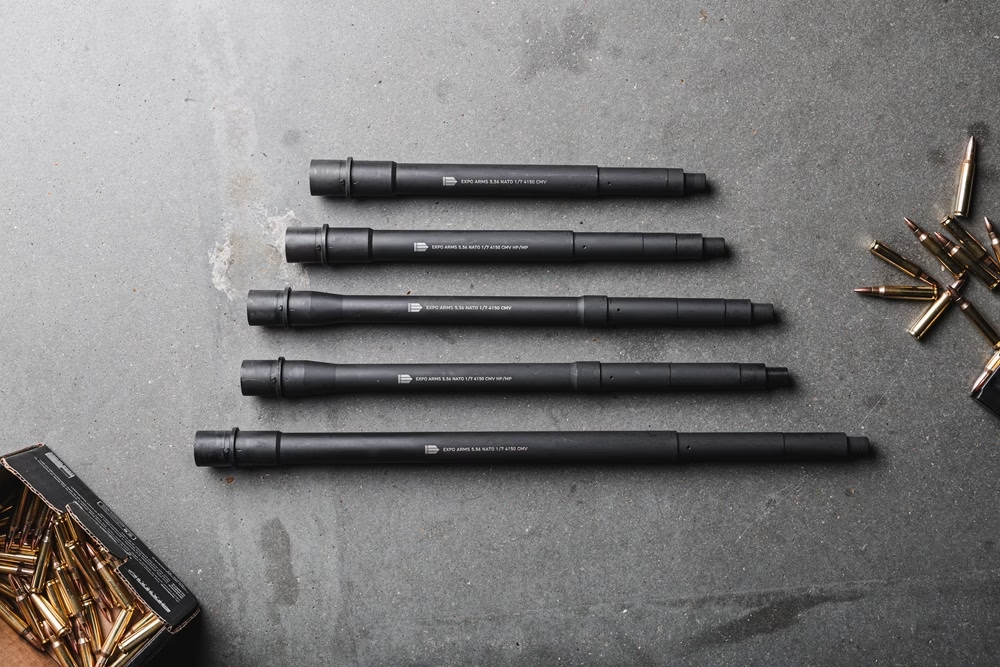
SOCOM Barrel Profile
Just as the pencil barrel was later reworked, so too would the government barrel design. Despite its initial success, various field analyses would find that there was a significant flaw in their design that made them prone to rupturing during fully automatic fire. Because of this, USSOCOM began developing an updated barrel profile, aptly referred to as the SOCOM profile. Rather than starting thin and flaring out towards the gas port, SOCOM barrels have a reverse contour that starts wide and thins out past the gas block.
Pros of SOCOM Barrels
We alluded to this earlier, but SOCOM barrels offer exceptional durability and reliability in harsh conditions. Their thicker diameter makes them far more resilient to heat buildup, allowing them to maintain their structural integrity and accuracy for longer periods of time. Plus, with their heavier overall profile, their added weight can help mitigate recoil.
Cons of SOCOM Barrels
Compared to the other barrels mentioned above, SOCOM barrels are much heavier, as they weigh anywhere from around 4 to upwards 12+ ounces heavier than Government barrels, depending on the length. Consequently, SOCOM barrels can be a bit more fatiguing when carrying your rifle over long distances, but it’s important to recognize that this heavily depends on the individual user as well as how the rifle is kitted out.
Also, while they handle heat better than thinner barrels, it’s imperative to note that they can retain heat longer than other barrel profiles. With enough use, your handguard can get uncomfortably hot as the barrel radiates heat making shooting gloves a solid investment, especially if you’ll be using your rifle in a duty or competitive application.
Best Use Cases
SOCOM profile barrels are great for competitive and duty rifle builds, but they can be overkill for casual enthusiasts, or for those wanting a lighter rifle. Currently, SOCOM barrels are produced by multiple manufacturers and are often equipped on barreled and complete uppers. Also, some manufacturers make barrels similar to SOCOM ones but call them by other names. For instance, select Expo Arms barrels have what they refer to as a “medium profile”, which has similar dimensions to SOCOM barrels. Regardless, being one of the more popular barrel profiles, you’ll have no shortage of options to choose from.
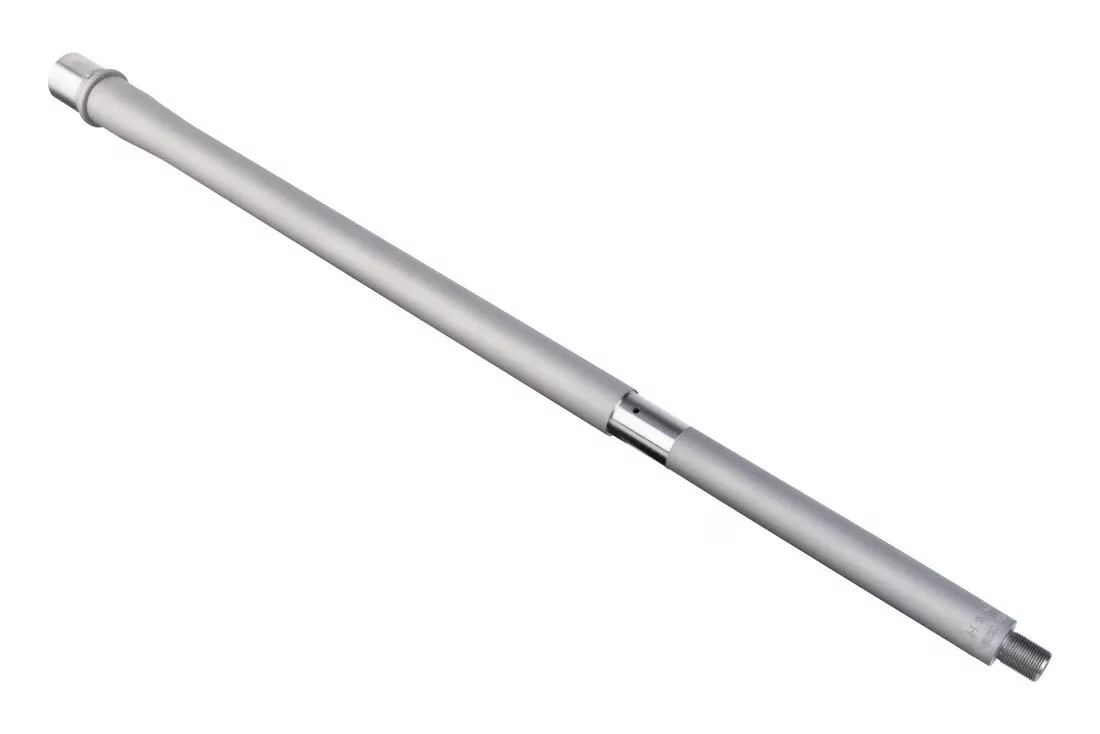
HBAR Barrel Profile
HBAR barrels are some of the heaviest barrels available for the AR-15. The term ‘HBAR’ is simply an acronym that stands for “heavy barrel”, with them having the bulk of their material around the chamber, making them much more rigid, allowing for greater accuracy across longer ranges. They still taper down at the gas port to fit a .750 gas block journal, and much like SOCOM barrels, they handle heat incredibly well, making them less susceptible to barrel whip and POI shifts when firing multiple rounds.
Pros of HBAR Barrels
One of the stark advantages offered by HBAR barrels is their accuracy. These barrels are much stiffer than any of the options mentioned thus far, giving them incredible rigidity that’s ideal for suppressive fire and accurate shooting. Such a heavy profile also comes with the distinct advantage of enhanced durability. They can perform incredibly in harsher environments and withstand tough use as well. Plus, the added weight of HBAR barrels does a lot to soften a rifle’s recoil impulse.
Cons of HBAR Barrels
One of the main drawbacks of HBAR barrels is their weight. It goes without saying that these barrels are heavy—a 16-inch Government profile barrel typically weighs around 25 ounces (just over 1.5 pounds), an HBAR barrel of the same length can weigh upwards of 2.31 pounds, which can dramatically increase the weight of your rifle. As such, these barrels won’t afford you the same level of maneuverability or agility as barrels with thinner profiles, unless you opt for a shorter barrel length.
Best use Cases
By design, HBAR barrels are made to offer superior accuracy and durability when used in harsh conditions. Amongst enthusiasts, they’re a popular option for both hunting and competition. Even though there are manufacturers producing shorter barrels with HBAR profiles, they aren’t the most conducive for close quarters use or other dynamic applications. Regardless, brands like Faxon Firearms and Ballistic Advantage produce an assortment of options to accommodate various preferences and roles.
Other Profiles
Bull Barrels
Bull barrels aren’t exclusive to the AR-15, but they’ve long been a popular choice for precision shooting. A bull barrel is essentially a beefed-up version of the HBAR profile. Instead of tapering down to fit a .750 gas journal, the barrel’s diameter remains relatively consistent over its entire length, stepping down in size at the gas journal, and stepping down slightly again to its final diameter. Being so large, they most often fit a larger .875-inch gas block, with some options being designed to fit an even larger .936-inch gas block.
Having such a heavy profile, they excel in long-range shooting disciplines, and since they’re heavier than HBAR barrels, they’re primarily used for competitive long-range and bench-rest rifles. Still, bull barrels are available in shorter lengths, as well as for other platforms like the AR-9. In fact, there are several 9mm AR barrel options that use a bull-barrel profile.
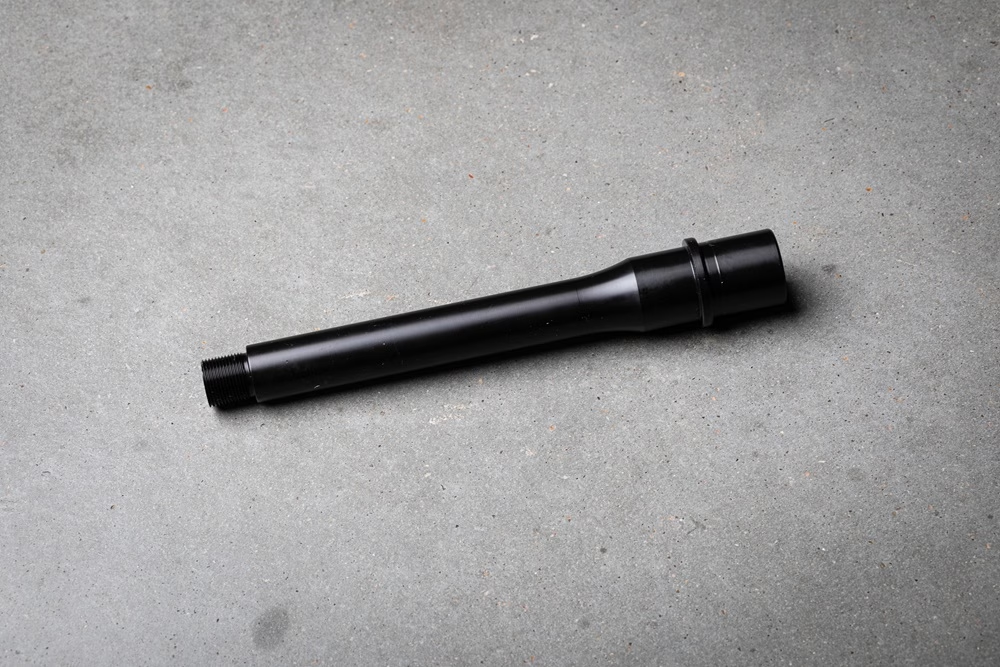
Straight Profile Barrels
Speaking of AR-9s, they commonly make use of a unique straight barrel profile. Straight barrels are often mistaken for bull barrels, and while they are similar, they aren’t exactly the same. Like bull barrels, straight ones often feature a heavier profile but aren’t necessarily required to have one. And, while bull barrels need a taper to accommodate a gas block, straight profile barrels have no taper since AR-9s use a direct blowback design. Many manufacturers produce barrels with this distinct profile, with options like Expo Arms’ Straight profile barrels being a solid choice for most AR-9 builds.
Conclusion
While barrel length certainly plays a role in determining how your AR-15 is going to perform in different applications, your barrel’s profile is another crucial consideration that shouldn’t go overlooked, especially since each one has its own distinct set of advantages.
Pencil profile barrels are excellent for minimizing weight but fall short in terms of their heat dissipation capabilities, which can lead to POI shifts during sessions of rapid fire. Meanwhile, HBAR and bull barrels offer extra durability and maintain accuracy where thinner barrels wouldn’t, but their added heft can make your rifle quite heavy. For a more balanced rifle, Government and SOCOM barrels are solid choices, with both striking a nice balance between weight savings and rugged reliability.
No matter which one you choose, it’s imperative that you take your own needs and preferences into consideration before buying. Having an idea of how you want your rifle to perform will go a long way in helping you narrow down the right barrel profile for you. And if you do this, you can rest assured knowing you have the right barrel for your AR-15.
